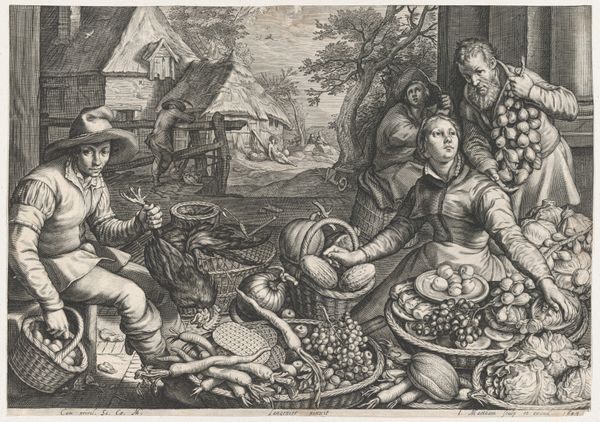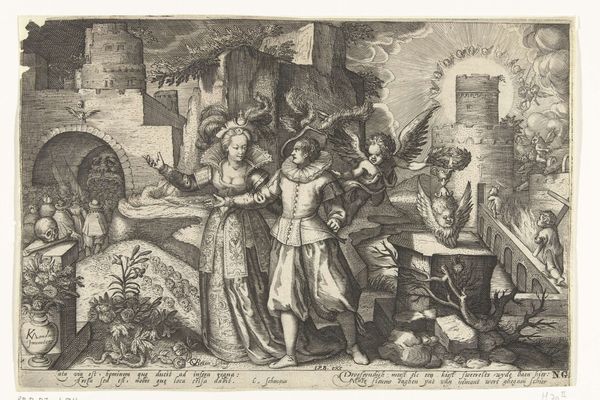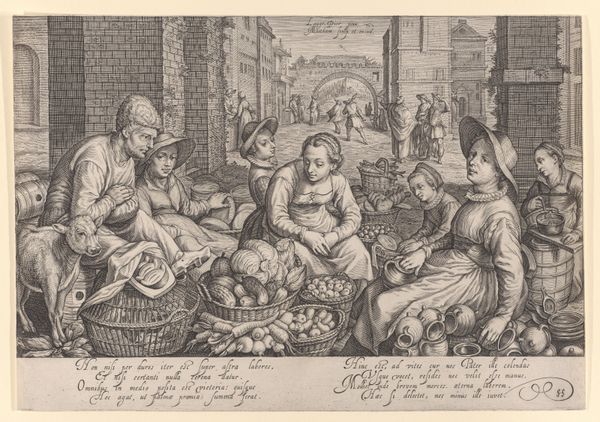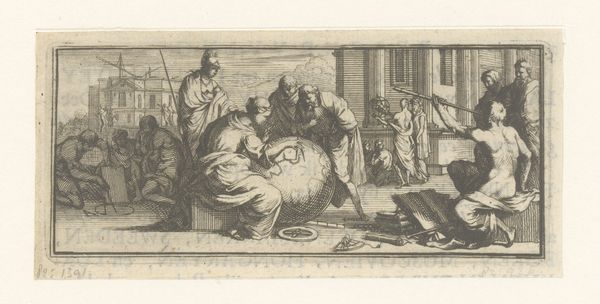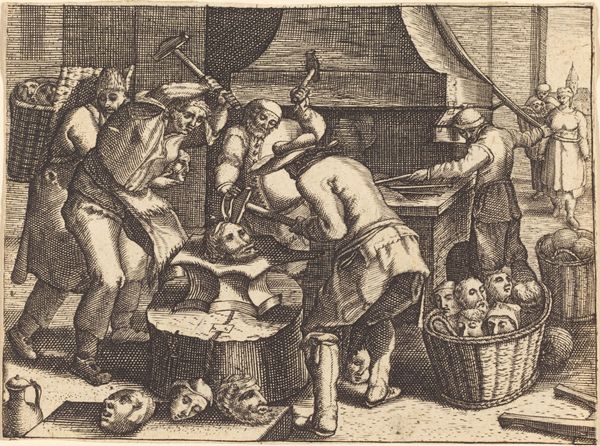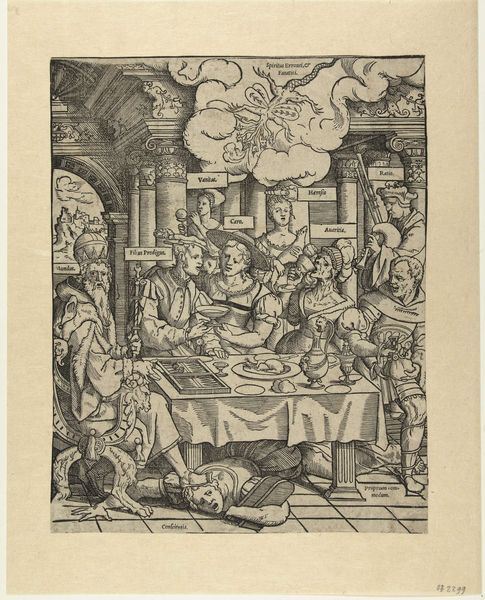
print, etching
#
dutch-golden-age
# print
#
etching
#
landscape
#
fruit
#
genre-painting
#
realism
Dimensions: height 242 mm, width 325 mm
Copyright: Rijks Museum: Open Domain
Curator: Editor: So, here we have Abraham van Lier's "Marktscène," an etching from the early 17th century. The detail is amazing. I’m initially struck by how much it resembles a photograph, showing the daily life of a long time ago, and by the sheer abundance of the market. What catches your eye? Curator: The overflowing market scene, the people engaging in trade - it all speaks to a particular social and economic moment. How do you read the visual narrative embedded in this genre scene? Does the apparent realism, which you observed, complicate how we understand the communities depicted? Editor: I see what you mean. I suppose it's easy to romanticize daily life from so long ago. How do you see it within a wider cultural or social context? Curator: This market scene, while seemingly a straightforward depiction of commerce, reveals the everyday power dynamics. For instance, we can analyze the labor displayed in this scene. Who is selling? Who is buying? And how does this relate to gender roles and social class in Dutch society at the time? Also, what is conspicuously missing from the market, and whose stories may not be present in this "realistic" depiction? Editor: That makes a lot of sense. I was just appreciating the pretty fruit, but now I see the etching tells a larger story about labor and economics. Curator: Exactly. Considering these works, it's key to keep in mind the social histories and question the power dynamics represented. How does thinking about its context impact your interpretation? Editor: I think I will never look at "realistic" art in the same way again! Thanks, it has given me a new perspective on the world, through a print. Curator: Indeed! And hopefully, a perspective rooted in intersectional understanding and social consciousness, offering us a clearer view of both past and present.
Comments
No comments
Be the first to comment and join the conversation on the ultimate creative platform.
